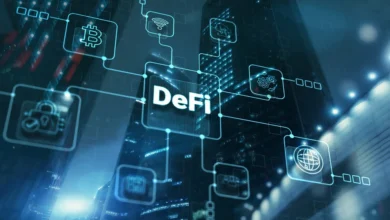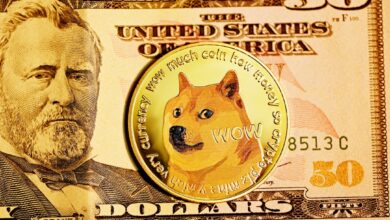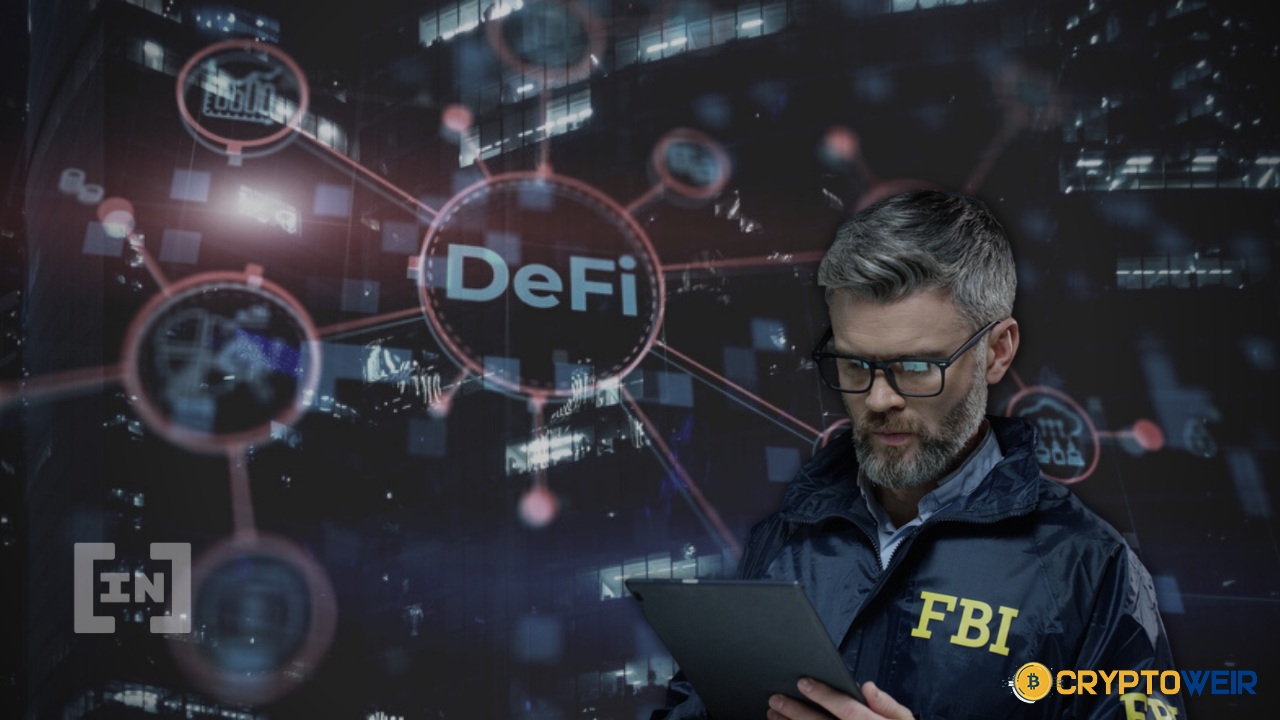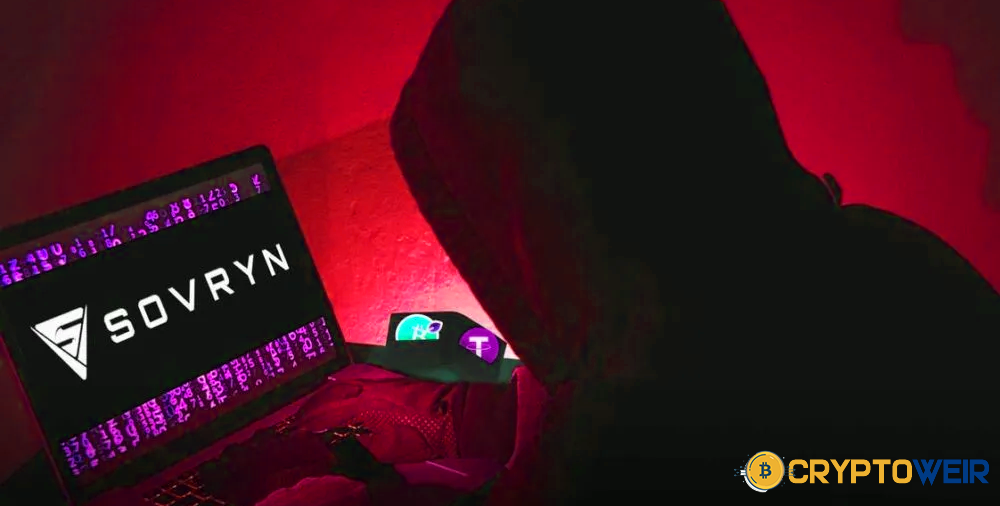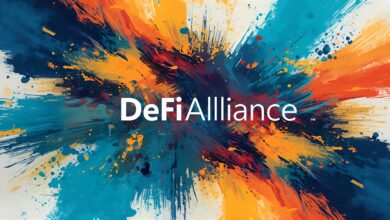Decentralized Finance Dogecoin: Unlocking the Potential
Decentralized Finance Dogecoin: Unlocking the Potential

Decentralized Finance Dogecoin: Unlocking the Potential
Can a cryptocurrency like Dogecoin, initially created as a meme, play a significant role in the rapidly evolving DeFi landscape? The recent filing of a provisional patent for the Dogecoin Protocol by Dogecoin Cash Inc. suggests it might.
The concept of Decentralized Finance (DeFi) has been gaining traction, leveraging blockchain technology to create financial services that are accessible and transparent. Dogecoin, with its growing community and low transaction fees, is poised to contribute to this ecosystem.

The patent filing indicates a significant step towards enhancing DOGE’s utility in DeFi and NFT ecosystems. This development could unlock new potential for Dogecoin, making it a more integral part of the blockchain and DeFi spaces.
Key Takeaways
- Dogecoin Cash Inc. has filed a provisional patent for the Dogecoin Protocol.
- The patent aims to enhance DOGE’s role in DeFi and NFT ecosystems.
- Decentralized Finance (DeFi) leverages blockchain technology.
- Dogecoin’s low transaction fees and growing community make it suitable for DeFi.
- The development could unlock new potential for Dogecoin in the blockchain space.
The Evolution of Dogecoin in the Cryptocurrency Landscape
Dogecoin’s journey from a meme coin to a significant player in the cryptocurrency market is a remarkable story of resilience and adaptability. Initially created as a humorous alternative to Bitcoin, Dogecoin has evolved to become a notable digital asset within the broader cryptocurrency ecosystem.
From Meme to Mainstream: Dogecoin’s Remarkable Journey
Dogecoin’s origins as a meme coin belied its potential for growth and adoption. However, it quickly gained traction due to its friendly community and low transaction fees. As the cryptocurrency landscape evolved, Dogecoin adapted, becoming a staple in the market.
Key Milestones in Dogecoin’s Development
Several key milestones have marked Dogecoin’s development. Notably, its listing on major cryptocurrency exchanges and significant community initiatives have contributed to its growth. Recently, Bit Origin’s decision to allocate up to $500 million in new capital to accumulate Dogecoin for its corporate treasury has highlighted DOGE’s increasing adoption and potential as a digital asset.
Dogecoin’s Current Market Position
Today, Dogecoin stands as a prominent cryptocurrency, with a dedicated community and a significant market presence. While the role of smart contracts is more nuanced in Dogecoin’s ecosystem compared to other cryptocurrencies like Ethereum, its integration with DeFi platforms is an area of growing interest. As the cryptocurrency market continues to evolve, Dogecoin’s position within it remains noteworthy.
Understanding Decentralized Finance (DeFi)
With its roots in blockchain technology, DeFi is poised to disrupt traditional finance. Decentralized Finance, or DeFi, represents a paradigm shift in the financial sector, offering a more open, transparent, and accessible system.
Core Principles of Decentralized Finance
DeFi is built on several core principles, including decentralization, transparency, and interoperability. These principles enable the creation of a financial system that is more resilient and less dependent on central authorities.
The use of blockchain technology and smart contracts is fundamental to DeFi. Ethereum is a leading platform for DeFi applications, providing the necessary infrastructure for complex financial instruments and protocols.
How DeFi Differs from Traditional Finance
Unlike traditional finance, DeFi operates on a decentralized network, allowing for peer-to-peer transactions without the need for intermediaries. This not only reduces costs but also increases the speed of transactions.
DeFi also promotes financial inclusion by providing access to financial services for anyone with an internet connection, regardless of their geographical location or financial status.
The Growth of the DeFi Ecosystem
The DeFi ecosystem has seen significant growth, with various protocols and platforms emerging. Yield farming and decentralized exchanges are among the popular DeFi applications that have gained traction.
Major DeFi Protocols and Platforms
Some of the major DeFi protocols and platforms include lending protocols like Compound and Aave, decentralized exchanges like Uniswap, and yield farming platforms that aggregate liquidity across different protocols.
Total Value Locked (TVL) in DeFi
The total value locked in DeFi protocols has seen a substantial increase, indicating growing investor confidence and adoption. TVL is a key metric for understanding the scale and growth of the DeFi ecosystem.
| Platform | TVL (in billions) | Primary Function |
|---|---|---|
| MakerDAO | 5 | Lending |
| Uniswap | 3 | Decentralized Exchange |
| Compound | 2 | Lending |
The Convergence of Dogecoin and DeFi
With the rise of DeFi, Dogecoin is emerging as a key player in the decentralized finance space. The integration of Dogecoin into DeFi represents a significant expansion of its utility beyond being a cryptocurrency.
Technical Foundations for Dogecoin in DeFi
The technical foundation for Dogecoin’s integration into DeFi involves several key components. Smart contracts play a crucial role in enabling complex financial operations on the blockchain. Dogecoin’s potential in DeFi is further enhanced by initiatives like Dogecoin Cash Inc.’s patent filing, which aims to enable cross-chain communication.
Bridging Dogecoin to DeFi-Compatible Blockchains
Bridging Dogecoin to DeFi-compatible blockchains is essential for its participation in DeFi projects. This process involves creating interoperability between Dogecoin’s blockchain and other DeFi platforms, allowing for seamless transactions and interactions.
“The ability to bridge different blockchain ecosystems is crucial for the growth of DeFi, enabling a more interconnected and robust financial system.”
The Role of Smart Contracts in Dogecoin DeFi
Smart contracts are pivotal in Dogecoin DeFi projects, facilitating lending, borrowing, and other financial services. They ensure that transactions are executed automatically and securely, without the need for intermediaries.
| DeFi Application | Functionality | Benefit |
|---|---|---|
| Lending Protocols | Enable Dogecoin holders to lend their assets | Earn interest on Dogecoin holdings |
| Decentralized Exchanges | Allow for the trading of Dogecoin | Provide liquidity and facilitate price discovery |
| Yield Farming | Enable users to earn rewards | Maximize returns on Dogecoin investments |
The convergence of Dogecoin and DeFi is poised to unlock new opportunities for users and investors, further establishing Dogecoin as a significant player in the decentralized finance ecosystem.
Current Dogecoin DeFi Projects and Platforms
The convergence of Dogecoin and DeFi is creating new opportunities for users and developers alike. As the cryptocurrency landscape evolves, Dogecoin is becoming an integral part of the decentralized finance ecosystem.

Decentralized Exchanges Supporting Dogecoin
Several decentralized exchanges (DEXs) now support Dogecoin, allowing users to trade DOGE directly on the blockchain. Uniswap and PancakeSwap are among the popular DEXs that have integrated Dogecoin, providing liquidity and expanding the token’s utility.
Dogecoin Lending and Borrowing Protocols
The emergence of lending and borrowing protocols for Dogecoin has opened up new avenues for holders to generate passive income or access capital. Platforms like Compound and Aave are exploring Dogecoin integration, enabling users to lend DOGE and earn interest or borrow against their holdings.
Yield Farming Opportunities with Dogecoin
Yield farming, a popular DeFi activity, is now accessible with Dogecoin. By providing liquidity to Dogecoin-based pools, users can earn rewards in the form of additional DOGE or other tokens. This has attracted many to participate in the Dogecoin DeFi ecosystem.
Dogecoin Liquidity Pools
Liquidity pools are crucial for the functioning of DeFi applications. Dogecoin liquidity pools allow users to contribute DOGE to facilitate trading and other DeFi activities, earning a share of transaction fees in return. These pools are essential for the growth of Dogecoin’s DeFi ecosystem.
The development of these DeFi projects and platforms is a significant step forward for Dogecoin, enhancing its utility and appeal in the broader cryptocurrency market.
Investment Strategies for Dogecoin in Decentralized Finance
As investors increasingly explore the potential of Dogecoin within the DeFi ecosystem, it’s crucial to understand the various investment strategies available. The integration of Dogecoin into DeFi has opened up new opportunities for investors to diversify their portfolios and capitalize on the growing trend.
Risk Assessment for Dogecoin DeFi Investments
Before investing in Dogecoin within the DeFi space, it’s essential to conduct a thorough risk assessment. This involves understanding the volatility of Dogecoin, the security of DeFi platforms, and the potential risks associated with smart contracts. Investors should evaluate their risk tolerance and consider diversifying their investments to mitigate potential losses.
Diversification Strategies with Dogecoin
Diversification is a key investment strategy when it comes to Dogecoin in DeFi. Investors can diversify by allocating their investments across various DeFi protocols, such as lending platforms, yield farming opportunities, and liquidity pools. This diversification can help spread risk and potentially increase returns.
Long-term vs. Short-term Investment Approaches
Investors must decide between long-term and short-term investment approaches. Long-term investments in Dogecoin DeFi may offer more stability, while short-term strategies can capitalize on market volatility. Staking Dogecoin for passive income is a popular long-term strategy, providing a steady return over time.
Staking Dogecoin for Passive Income
Staking Dogecoin involves holding the cryptocurrency in a wallet or on a platform that supports staking, earning rewards in the form of additional Dogecoin. This method provides a relatively stable source of passive income.
Trading Strategies in Dogecoin DeFi Markets
For those adopting a short-term approach, trading strategies in Dogecoin DeFi markets can be lucrative. This involves actively buying and selling Dogecoin on DeFi exchanges, taking advantage of market fluctuations.
By understanding these investment strategies and assessing their risk tolerance, investors can make informed decisions about their Dogecoin investments in the DeFi ecosystem.
Challenges and Solutions in the Dogecoin DeFi Ecosystem
The Dogecoin community is actively working to overcome the technical, security, and regulatory hurdles in the DeFi landscape. As the ecosystem continues to grow, it’s crucial to address these challenges to ensure the long-term success of Dogecoin in DeFi.
Technical Limitations and Potential Solutions
One of the primary technical challenges facing Dogecoin DeFi is the need for interoperability between different blockchain networks. To address this, developers are exploring cross-chain solutions that enable seamless interactions between Dogecoin and other DeFi-compatible blockchains.
Another technical limitation is the scalability of the Dogecoin network. To improve scalability, developers are investigating layer 2 solutions that can increase transaction throughput without compromising the security of the mainnet.
Security Concerns in Dogecoin DeFi
Security is a critical concern in the DeFi space, and Dogecoin is no exception. The use of smart contracts in DeFi applications introduces potential vulnerabilities that can be exploited by malicious actors.
Smart Contract Vulnerabilities
Smart contract vulnerabilities have been a significant source of security breaches in DeFi. To mitigate this risk, it’s essential to conduct thorough audits of smart contracts before deployment and to implement robust testing protocols.
“The security of smart contracts is paramount in DeFi. Ensuring that contracts are thoroughly tested and audited can significantly reduce the risk of vulnerabilities being exploited.”
Best Practices for Securing Your Dogecoin in DeFi
To secure Dogecoin in DeFi, users should follow best practices such as using hardware wallets, enabling two-factor authentication, and being cautious of phishing attempts. Additionally, users should thoroughly research DeFi platforms before investing their DOGE.
| Security Measure | Description | Benefit |
|---|---|---|
| Hardware Wallets | Store private keys offline | Enhanced security against hacking |
| Two-Factor Authentication | Add an extra layer of verification | Reduced risk of unauthorized access |
| Phishing Awareness | Be cautious of suspicious emails and links | Protection against phishing attacks |
Regulatory Considerations for Dogecoin DeFi Users
Regulatory considerations are also crucial for Dogecoin DeFi users. As DeFi continues to grow, regulatory bodies are likely to introduce new guidelines and requirements. Users must stay informed about these developments to ensure compliance and avoid potential legal issues.
Staying ahead of regulatory changes is vital for the long-term viability of Dogecoin in DeFi. Users and developers alike must be prepared to adapt to evolving regulatory landscapes.

The Dogecoin Community’s Role in DeFi Adoption
The Dogecoin community is pivotal in driving DeFi adoption through various initiatives. This community-driven approach is crucial for the growth and development of Dogecoin within the DeFi ecosystem.
Community-Driven Development Initiatives
The Dogecoin community has been actively involved in developing initiatives that promote DeFi adoption. Community-driven development has led to the creation of new projects and platforms that integrate Dogecoin into the DeFi space. For instance, developers within the community have worked on bridging Dogecoin to DeFi-compatible blockchains, enhancing its utility.
These initiatives not only expand the use cases for Dogecoin but also foster a more inclusive and diverse DeFi ecosystem. By leveraging the collective expertise and creativity of its members, the Dogecoin community is able to drive innovation and growth.
Educational Resources for Dogecoin DeFi Users
Education is a critical component of DeFi adoption, and the Dogecoin community has responded by creating various educational resources. These resources range from tutorials and guides to webinars and community forums, all aimed at helping users navigate the complexities of DeFi.
By empowering users with knowledge, the Dogecoin community is facilitating a smoother transition into the DeFi space. This educational effort is crucial for mitigating risks and ensuring that users can maximize the benefits of participating in DeFi.
The Impact of Social Media on Dogecoin DeFi Growth
Social media platforms have become essential channels for promoting Dogecoin DeFi initiatives and engaging with the community. Social media is used to share updates, announce new projects, and provide real-time support to users.
The active presence of Dogecoin on social media platforms contributes to its visibility and attractiveness to potential new users. This heightened visibility is crucial for the continued growth and adoption of Dogecoin in the DeFi sector.
Future Trends in Dogecoin Decentralized Finance
The convergence of Dogecoin and DeFi is expected to unlock new opportunities for investors and users alike. As the cryptocurrency landscape continues to evolve, Dogecoin’s role in decentralized finance is becoming increasingly significant.
Upcoming Protocol Upgrades and Their Implications
Recent dogecoin updates have hinted at significant protocol upgrades that could enhance the coin’s functionality within the DeFi ecosystem. These upgrades are expected to improve transaction speeds and reduce fees, making Dogecoin a more attractive option for DeFi applications.
Potential Integration with Layer2 Solutions
The integration of Dogecoin with Layer2 solutions could further boost its DeFi capabilities. Layer2 solutions are designed to improve scalability and reduce congestion on the main blockchain, potentially making Dogecoin more competitive in the DeFi space.
Cross-Chain Compatibility and Interoperability
As DeFi continues to grow, the need for cross-chain compatibility and interoperability becomes more pressing. Dogecoin’s potential integration with other blockchains could enable seamless interactions between different cryptocurrency ecosystems, expanding its utility in DeFi applications.
Dogecoin DeFi in the Broader Cryptocurrency Ecosystem
The role of Dogecoin in the broader cryptocurrency ecosystem is also expected to evolve. As a popular cryptocurrency, Dogecoin’s participation in DeFi could influence dogecoin price analysis and attract more investors to the decentralized dogecoin exchange market.
In conclusion, the future of Dogecoin in DeFi looks promising, with various developments on the horizon. As the ecosystem continues to mature, we can expect to see new and innovative applications of Dogecoin in the DeFi space.
Conclusion: The Future Potential of Dogecoin in DeFi
As decentralized finance (DeFi) continues to evolve, Dogecoin’s potential in this space is becoming increasingly significant. Various developments and initiatives are underway to integrate Dogecoin into the DeFi ecosystem, leveraging its strong community and liquidity.
The convergence of Dogecoin and DeFi has opened up new opportunities for financial technology innovation. With the technical foundations being laid for Dogecoin’s participation in DeFi, users can expect to see more decentralized exchanges, lending protocols, and yield farming opportunities that utilize Dogecoin.
The future of Dogecoin cryptocurrency in DeFi looks promising, with potential integrations with layer 2 solutions and cross-chain compatibility on the horizon. As the DeFi ecosystem expands, Dogecoin is poised to play a more substantial role, offering users more financial services and opportunities.
With ongoing advancements and community-driven initiatives, Dogecoin is set to make a meaningful impact in the DeFi space, further establishing itself as a significant player in the world of cryptocurrency and financial technology.
FAQ
What is Decentralized Finance (DeFi) and how does it relate to Dogecoin?
Decentralized Finance (DeFi) refers to a set of financial services and tools that operate on blockchain technology, allowing for peer-to-peer transactions without intermediaries. Dogecoin, as a cryptocurrency, can be integrated into DeFi protocols, enabling users to lend, borrow, and trade DOGE in a decentralized manner.
How can Dogecoin be used in DeFi applications?
Dogecoin can be used in various DeFi applications, such as lending and borrowing protocols, yield farming, and liquidity pools, by bridging DOGE to compatible blockchains and utilizing smart contracts.
What are the benefits of using Dogecoin in DeFi?
Using Dogecoin in DeFi offers several benefits, including increased liquidity, accessibility to a broader range of financial services, and the potential for higher returns through yield farming and other investment strategies.
What are the risks associated with investing in Dogecoin DeFi?
Investing in Dogecoin DeFi carries risks, including market volatility, security concerns, and regulatory uncertainty. It’s essential to conduct thorough risk assessments and diversify investments to mitigate potential losses.
How can I secure my Dogecoin in DeFi?
To secure your Dogecoin in DeFi, use reputable platforms, enable robust security measures such as two-factor authentication, and consider using hardware wallets to store your assets.
What is the role of the Dogecoin community in DeFi adoption?
The Dogecoin community plays a crucial role in DeFi adoption by driving development initiatives, creating educational resources, and promoting DOGE’s use in DeFi through social media and other channels.
What are the future trends in Dogecoin DeFi?
Future trends in Dogecoin DeFi include the integration of Layer2 solutions, cross-chain compatibility, and protocol upgrades, which are expected to enhance the usability and scalability of DOGE in DeFi.
How does Dogecoin’s price affect its use in DeFi?
Dogecoin’s price can impact its use in DeFi, as a higher price may increase the attractiveness of DOGE for lending and borrowing, while a lower price may reduce its appeal. However, the overall DeFi ecosystem and the specific use cases for DOGE can also influence its adoption.
Can Dogecoin be used for yield farming?
Yes, Dogecoin can be used for yield farming by providing liquidity to DOGE-based pools on DeFi platforms, allowing users to earn rewards in the form of interest or additional tokens.
What are the regulatory considerations for Dogecoin DeFi users?
Regulatory considerations for Dogecoin DeFi users include compliance with anti-money laundering (AML) and know-your-customer (KYC) regulations, as well as tax obligations related to cryptocurrency transactions.





